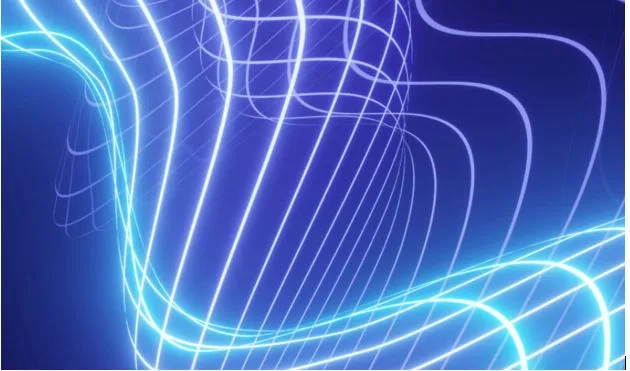Legacy Application Modernization | Zoolatech
There’s an old saying in IT circles: “Software never dies, it just grows gray hair.”
And indeed, many enterprises still run their business-critical processes on systems that were written before smartphones even existed. These systems are the so-called legacy applications—once reliable workhorses, now often more like creaky elevators in a modern glass tower.
They still function. They still carry value. But they’re slow, costly, and dangerously fragile in a world that moves at cloud speed. This is where legacy application modernization steps in—not as a buzzword, but as a lifeline.
Why Legacy Applications Still Matter (and Still Hurt)
Imagine walking into a library with millions of books stacked high, but only one rusty ladder to reach them. That’s the daily reality for companies with legacy systems: tons of data, limited agility.
The hidden costs of legacy:
- Maintenance money pits – Some organizations spend up to 70–80% of IT budgets just keeping the lights on.
- Security risks – Old tech is like leaving your front door unlocked in a bad neighborhood. Hackers love it.
- Talent shortage – Try finding a 25-year-old COBOL developer. Good luck.
- Customer frustration – Legacy systems can’t keep up with real-time, mobile-first expectations.
It’s not that legacy systems are “bad.” They’re just out of sync with today’s world—like running a marathon in dress shoes.
What Legacy Application Modernization Really Means
When people hear modernization, they often picture ripping everything out and starting fresh. But the reality is more nuanced.
Legacy application modernization is the process of upgrading, re-architecting, or integrating existing systems so they can meet modern business demands.
And it comes in many flavors:
- Rehosting – “Lift and shift” to the cloud.
- Replatforming – Adjusting applications for cloud benefits without rewriting them.
- Refactoring – Tweaking code for efficiency and maintainability.
- Rebuilding – Starting from scratch with new tech.
- Replacing – Dropping legacy for SaaS or off-the-shelf solutions.
No two organizations take the same path. Modernization is more like tailoring a suit than buying one off the rack.
The Business Case: More Than Saving Money
A CIO once told me: “We don’t modernize for fun. We modernize to stay alive.”
That might sound dramatic, but it’s true. The business case for legacy modernization services is as much about survival as it is about growth.
Tangible benefits include:
- Cost reduction – Free up budgets by lowering maintenance overhead.
- Speed to market – New features can be launched in weeks, not quarters.
- Security uplift – Closing backdoors that attackers exploit.
- Customer delight – Modern apps deliver seamless digital experiences.
- Strategic agility – Companies can pivot faster when markets shift.
Think of modernization as trading in an old, gas-guzzling car for an electric vehicle. Sure, you save on fuel, but the real magic is the speed, silence, and ability to go places the old car never could.
A Step-by-Step Journey
Modernization is not a one-and-done project. It’s a journey.
- Discovery – Map out all systems, dependencies, and business processes.
- Assessment – Identify pain points and business priorities.
- Strategy – Decide on rehosting, refactoring, or full rebuilds.
- Execution – Start small, modernize in waves, and measure results.
- Continuous evolution – Technology doesn’t stop; neither should modernization.
The smartest companies treat modernization as ongoing—not an emergency fix, but a steady path forward.
Zoolatech’s Approach to Modernization
At Zoolatech, modernization isn’t just about technology. It’s about aligning IT with business goals. Too often, organizations get stuck treating modernization as a “tech clean-up.” Zoolatech flips the script by focusing on outcomes.
Their approach includes:
- Holistic assessments – Looking at both technical debt and business value.
- Custom strategies – No cookie-cutter roadmaps; each client gets a tailored plan.
- Full delivery cycle – Architecture, migration, development, testing, support.
- Future-readiness – Ensuring that modernization today doesn’t become legacy tomorrow.
Mini-case: A European retailer once ran its entire order system on a monolithic app built 15 years ago. It couldn’t handle new delivery models like curbside pickup. Zoolatech migrated the core functions to a cloud-based microservices architecture. Within months, the retailer added same-day delivery and boosted sales during the holiday season.
That’s not just IT transformation. That’s business transformation.
Comparing Modernization Options
Here’s a snapshot for decision-makers who like side-by-side clarity:
| Approach | Description | Pros | Cons | Best Use Case |
| Rehosting | Lift-and-shift to cloud | Fast, lower upfront cost | Doesn’t fix old inefficiencies | Short-term relief |
| Replatforming | Move to modern cloud environment | Gains cloud benefits, scalable | Some code changes needed | Cloud-ready apps |
| Refactoring | Optimize internal code | Improves maintainability, speed | More effort than rehosting | Mid-life systems |
| Rebuilding | Recreate app from scratch | Future-proof, clean architecture | Expensive, time-intensive | Critical systems |
| Replacing | Switch to SaaS | Quick, lower maintenance | Less customization | Commodity apps |
The COBOL Parable
Consider a bank running payroll on COBOL. It works. But adding new compliance rules? Painful. And the only COBOL engineer left is set to retire.
The choice isn’t “replace or die.” Instead, the bank can refactor core code while building APIs for modern digital interfaces. Customers see slick new apps, while the reliable mainframe keeps chugging in the background.
That’s modernization in action: not destruction, but integration.
Pitfalls Along the Way
Even the best strategies fail if common mistakes creep in:
- All-at-once modernization – Too risky. Start with pilot projects.
- Ignoring business goals – Tech changes must support real business outcomes.
- Skipping testing – A shortcut here can cause million-dollar meltdowns.
- Cultural resistance – Teams need training and buy-in, not just new code.
Future of Legacy Modernization
Modernization itself is modernizing. The next wave includes:
- AI-assisted refactoring – Tools that auto-generate new code from old.
- Cloud-native microservices – Breaking systems into modular, agile components.
- Low-code acceleration – Empowering business users to build apps.
- Security-driven transformation – Making cyber resilience a first-class goal.
The future is clear: modernization is no longer optional. It’s inevitable.
Final Word
Legacy applications aren’t just “old software.” They’re history books, holding decades of customer data, business logic, and institutional knowledge. But just like an old mansion, they require renovation if they’re to be lived in, not abandoned.
Legacy application modernization is that renovation. It’s messy at times, but with the right partner—like Zoolatech—it can transform not just your IT stack but your entire business trajectory.






